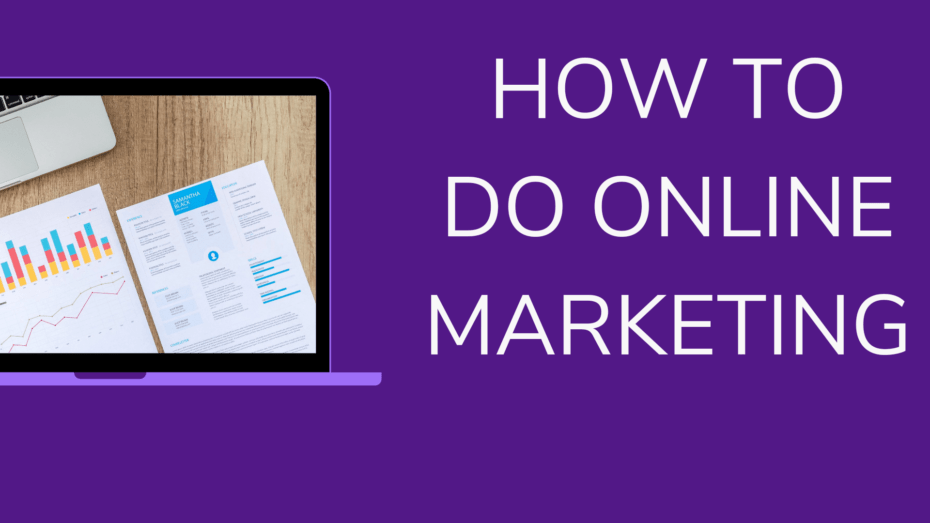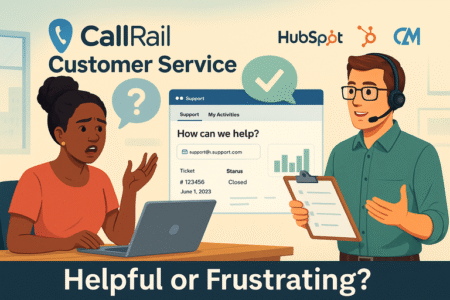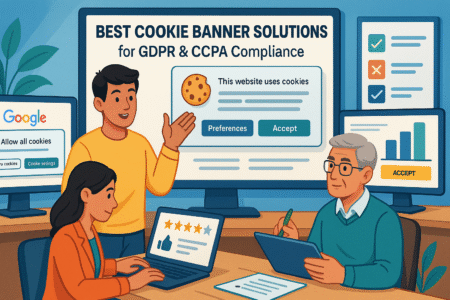Table of Contents
Are you struggling to figure out how to do online marketing effectively? Do you want to learn simple and free methods to boost your online presence? How can you leverage the power of online marketing to grow your business without breaking the bank?
Online marketing can seem overwhelming, especially with so many tools and strategies available. My intention is to simplify this process for you. By the end of this guide, you will have a clear understanding of how to do online marketing using cost-effective techniques.
I believe that with the right approach, anyone can succeed in the digital marketing landscape. Let’s dive into the basics and explore the most impactful strategies to enhance your online presence.
Understanding the Basics of Online Marketing
Online marketing, also known as digital marketing, involves promoting products or services through digital channels such as websites, social media, email, and search engines.
My intention is to help you grasp the fundamental concepts so you can effectively leverage these channels for your business. I would say that understanding the basics is crucial to developing a successful marketing strategy.
I believe that the foundation of online marketing lies in understanding your audience and how they interact with digital platforms. By gaining insights into your target audience’s behaviors and preferences, you can create tailored marketing campaigns that resonate and drive engagement.
According to industry experts, a well-rounded understanding of online marketing basics can significantly enhance your marketing efforts.
What is Online Marketing?
Online marketing is the practice of using digital channels to reach potential customers and promote products or services. This encompasses a variety of tactics, including search engine optimization (SEO), content marketing, social media marketing, and email marketing. I suggest starting with a clear goal and identifying which channels align best with your business objectives.
I recommend focusing on creating valuable and relevant content that addresses your audience’s needs. By doing so, you can attract and retain customers more effectively. Additionally, leveraging SEO techniques ensures that your content is easily discoverable by search engines, thereby increasing your online visibility.
Most importantly, online marketing allows for precise targeting and measurable results. With tools like Google Analytics, you can track the performance of your campaigns and make data-driven decisions to optimize your marketing efforts. My advice is to continuously analyze and refine your strategies based on these insights.
Why Online Marketing is Essential for Businesses
In today’s digital age, having a robust online presence is vital for any business. Online marketing provides an opportunity to reach a global audience and engage with customers in real-time. I believe that businesses that embrace online marketing can achieve significant growth and brand recognition.
One of the main advantages of online marketing is its cost-effectiveness. Traditional marketing methods, such as print and television ads, can be expensive and may not always deliver the desired results.
In contrast, digital marketing allows businesses to reach a larger audience with a relatively low investment. My recommendation is to allocate a portion of your marketing budget to online channels to maximize your reach and return on investment.
Moreover, online marketing offers unparalleled flexibility and adaptability. Campaigns can be quickly adjusted based on performance metrics, ensuring that you can respond to market changes and consumer behavior in real-time. According to experts, this agility is crucial for staying competitive in today’s fast-paced business environment.
Finally, online marketing fosters direct interaction with customers, enabling businesses to build stronger relationships and enhance customer loyalty. Through social media, email newsletters, and interactive content, you can engage with your audience on a personal level, which I think is essential for long-term success.
Different Channels of Online Marketing
Online marketing encompasses various channels, each with its unique strengths and applications. My suggestion is to explore and utilize multiple channels to create a comprehensive marketing strategy that covers all bases.
Search engine optimization (SEO) is a fundamental aspect of online marketing. By optimizing your website and content for search engines, you can improve your organic search rankings and attract more visitors. I recommend conducting thorough keyword research and implementing on-page and off-page SEO techniques to boost your visibility.
Social media marketing is another powerful channel that allows businesses to connect with their audience on platforms like Facebook, Instagram, Twitter, and LinkedIn. I suggest creating engaging content that encourages interaction and shares to build a strong online community. Additionally, paid social media advertising can help you reach a wider audience and drive targeted traffic to your website.
Email marketing remains one of the most effective ways to nurture leads and convert them into customers. By building an email list and sending personalized, value-driven emails, you can maintain regular contact with your audience. My advice is to segment your email list and tailor your messages to different audience groups for better engagement.
Content marketing involves creating and distributing valuable content to attract and retain a clearly defined audience. This includes blog posts, videos, infographics, and more.
According to industry studies, businesses that prioritize content marketing see higher engagement rates and better customer retention. My recommendation is to focus on producing high-quality, relevant content that addresses your audience’s pain points and interests.
Top Free Tools for Online Marketing Success
When it comes to learning how to do online marketing, leveraging free tools can significantly boost your efforts without straining your budget. These tools can help you analyze data, manage social media, and create engaging content, all essential components of a successful online marketing strategy. My recommendation is to explore these tools and integrate them into your marketing plan to maximize efficiency and results.
I believe that using these free tools can provide a solid foundation for your marketing efforts. By understanding and utilizing the best options available, you can enhance your online presence and achieve your marketing goals effectively. Let’s delve into some of the top free tools that can aid your online marketing success.
Best Free Analytics Tools
One of the most important aspects of online marketing is understanding your audience and their behavior. I suggest starting with Google Analytics, a powerful and free tool that provides in-depth insights into your website traffic and user behavior. By analyzing this data, you can make informed decisions to optimize your marketing strategies.
Another great tool is Google Search Console, which helps you monitor your website’s presence in Google search results. It offers valuable information on search performance, indexing status, and potential issues that may affect your site’s visibility. My advice is to regularly check these metrics to ensure your website is performing at its best.
Most importantly, these analytics tools can help you track key performance indicators (KPIs) and measure the success of your campaigns. I recommend setting up specific goals and conversions within these tools to gain a clear understanding of your marketing efforts’ effectiveness.
Free Social Media Management Tools
Managing multiple social media accounts can be challenging, but free tools like Hootsuite and Buffer make it easier. These platforms allow you to schedule posts, monitor engagement, and analyze performance across various social media channels. My suggestion is to use these tools to maintain a consistent posting schedule and engage with your audience more efficiently.
Another useful tool is Later, which focuses on visual content planning and scheduling for Instagram. It offers a drag-and-drop calendar to help you plan your posts and optimize your feed visually. According to social media experts, having a cohesive and visually appealing Instagram presence can significantly boost engagement.
I believe that social media management tools are essential for streamlining your efforts and saving time. By automating your posts and tracking their performance, you can focus on creating quality content and interacting with your followers. My recommendation is to take advantage of these free tools to enhance your social media marketing strategy.
Lastly, tools like TweetDeck provide a comprehensive dashboard for managing Twitter accounts. It allows you to monitor multiple timelines, schedule tweets, and track relevant hashtags. I suggest using TweetDeck to stay on top of real-time conversations and engage with your audience more effectively.
Content Creation Tools at No Cost
Creating high-quality content is crucial for engaging your audience and driving traffic to your website. Canva is a fantastic free tool for designing graphics, social media posts, and marketing materials.
It offers a wide range of templates and easy-to-use design features, making it accessible even for those with no graphic design experience. I recommend using Canva to create visually appealing content that stands out.
For video content, consider using free tools like Shotcut or OpenShot. These video editing software options provide robust features for creating professional-looking videos without the cost. According to video marketing statistics, video content significantly boosts engagement and conversion rates. My advice is to incorporate video into your content strategy using these free tools.
Another excellent resource is Grammarly, a free writing assistant that helps improve your content’s clarity, grammar, and overall readability. I believe that clear and error-free content is essential for maintaining a professional image and effectively communicating with your audience. My suggestion is to use Grammarly to polish your written content before publishing.
Lastly, explore tools like HubSpot’s Blog Ideas Generator for content inspiration. By entering a few keywords, you can generate a week’s worth of blog post ideas tailored to your audience’s interests. This can be particularly useful for maintaining a consistent content schedule and ensuring your topics are relevant and engaging.
Crafting an Effective Online Marketing Strategy
When learning how to do online marketing, one of the most crucial steps is to craft an effective strategy. A well-thought-out online marketing strategy can guide your efforts, ensuring that you stay focused on your goals and achieve measurable results. My intention is to provide you with a clear framework to develop a strategy that works for your business.
I believe that an effective strategy starts with clear goals, a deep understanding of your target audience, and a realistic budget. By focusing on these key elements, you can create a roadmap that will help you navigate the complexities of online marketing and achieve success. Let’s explore each of these components in detail.
Setting Clear Marketing Goals
To create a successful online marketing strategy, setting clear and achievable goals is essential. These goals will guide your efforts and help you measure success. My recommendation is to use the SMART criteria—Specific, Measurable, Achievable, Relevant, and Time-bound—to define your marketing objectives.
For instance, instead of setting a vague goal like “increase website traffic,” you could set a SMART goal such as “increase website traffic by 20% over the next three months through targeted content marketing and SEO efforts.” I suggest breaking down your goals into smaller, manageable tasks to stay on track and make consistent progress.
Most importantly, ensure that your goals align with your overall business objectives. This alignment will help you prioritize your marketing efforts and allocate resources effectively. According to marketing experts, goal-setting is a critical step in creating a focused and effective marketing strategy.
Identifying Your Target Audience
Knowing your target audience is fundamental to crafting a successful online marketing strategy. By understanding who your ideal customers are, you can tailor your marketing messages and choose the right channels to reach them. I believe that creating detailed buyer personas can help you gain insights into your audience’s demographics, preferences, and behaviors.
My suggestion is to conduct market research to gather data about your audience. This research can include surveys, interviews, and analysis of existing customer data. According to industry studies, businesses that deeply understand their target audience can create more relevant and engaging marketing campaigns.
I recommend segmenting your audience based on factors such as age, location, interests, and purchasing behavior. This segmentation allows you to deliver personalized content and offers that resonate with different audience groups. My advice is to continuously refine your buyer personas as you gather more data and insights.
Lastly, use tools like Google Analytics and social media insights to track and analyze your audience’s behavior. These tools provide valuable information about how your audience interacts with your content and website, helping you make data-driven decisions to improve your marketing efforts.
Budgeting for Your Online Marketing Efforts
Creating a budget for your online marketing efforts is crucial to ensure that you allocate resources effectively and achieve the best possible results. I suggest starting by identifying your overall marketing budget and then breaking it down into specific categories, such as content creation, social media advertising, and email marketing.
I believe that it’s essential to strike a balance between investing in paid strategies and leveraging free tools and tactics. My recommendation is to prioritize spending on areas that have the highest potential for return on investment (ROI), such as targeted advertising and high-quality content production.
Most importantly, regularly review and adjust your budget based on the performance of your marketing campaigns. According to financial experts, businesses that actively manage their marketing budgets can optimize their spending and achieve better results. My advice is to use analytics tools to track your expenses and measure the effectiveness of your marketing efforts.
Additionally, consider setting aside a portion of your budget for experimenting with new strategies and tools. This approach allows you to stay agile and adapt to changing market trends. I suggest keeping an eye on industry developments and being open to trying innovative marketing tactics that could benefit your business.
Leveraging Social Media for Marketing
When considering how to do online marketing, leveraging social media is an essential strategy for reaching and engaging with your audience. Social media platforms offer vast opportunities to connect with potential customers, build brand awareness, and drive traffic to your website. My recommendation is to utilize these platforms effectively to maximize your marketing efforts.
I believe that a strategic approach to social media can yield significant benefits for your business. By choosing the right platforms, creating shareable content, and actively engaging with your audience, you can enhance your online presence and achieve your marketing goals. Let’s explore these aspects in more detail.
Choosing the Right Social Media Platforms
Selecting the appropriate social media platforms is crucial for the success of your online marketing strategy. Not all platforms will be suitable for your business, so it’s essential to choose those that align with your target audience and marketing objectives. I suggest starting by researching where your audience spends most of their time online.
For example, if your target audience is primarily professionals, LinkedIn might be the best platform to focus on. On the other hand, if you aim to reach younger consumers, platforms like Instagram and TikTok could be more effective. My advice is to prioritize platforms that offer the highest engagement potential for your specific audience.
According to social media experts, businesses that focus on a few key platforms rather than spreading themselves too thin across many channels often see better results. My recommendation is to start with one or two platforms, master them, and then consider expanding to others if needed.
Creating Shareable Content
Creating content that resonates with your audience and encourages them to share it is vital for social media success. Shareable content not only increases your reach but also enhances your brand’s credibility. I believe that the key to creating such content lies in understanding your audience’s interests and pain points.
My suggestion is to use a mix of content types, including images, videos, infographics, and articles, to keep your audience engaged. Visual content, in particular, tends to perform well on social media. According to studies, posts with images or videos receive significantly higher engagement than text-only posts.
I recommend crafting content that tells a story or provides value, such as tips, how-to guides, and industry insights. Content that evokes emotions, whether through humor, inspiration, or thought-provoking messages, is more likely to be shared. Most importantly, ensure that your content aligns with your brand voice and messaging.
Lastly, use social media analytics tools to track the performance of your content and identify what works best. This data can help you refine your content strategy and focus on creating more of what your audience loves. My advice is to continuously experiment and optimize your content to achieve the best results.
Engaging with Your Audience
Engagement is a critical component of social media marketing. It’s not enough to just post content; you also need to interact with your audience to build relationships and foster loyalty. I think that responding to comments, messages, and mentions promptly can significantly enhance your brand’s image.
My recommendation is to actively participate in conversations related to your industry or niche. This could involve joining relevant groups, commenting on posts, and sharing valuable insights. By doing so, you position your brand as an authority and build a community around it.
I suggest using social media to gather feedback from your audience. Ask questions, conduct polls, and encourage user-generated content. According to marketing experts, involving your audience in your brand’s journey can create a sense of belonging and increase engagement.
Most importantly, be authentic and personable in your interactions. People prefer to engage with brands that show a human side. My advice is to maintain a friendly and professional tone, showing appreciation for your audience’s support and addressing any concerns they may have. This approach can help you build lasting relationships and a loyal following on social media.
Content Marketing: Driving Engagement and Traffic
Content marketing is a powerful strategy when learning how to do online marketing effectively. By creating and sharing valuable content, you can engage your audience, drive traffic to your website, and build trust with potential customers. My intention is to guide you through key aspects of content marketing to help you achieve these goals.
I believe that a structured approach to content creation and distribution is essential for success. This includes developing a content calendar, writing SEO-friendly blog posts, and utilizing video content for higher engagement. Let’s delve into each of these components to see how they can enhance your online marketing efforts.
Developing a Content Calendar
Creating a content calendar is an essential step in your content marketing strategy. It helps you plan, organize, and schedule your content in advance, ensuring a consistent and cohesive approach. I recommend starting by identifying key themes and topics that resonate with your audience.
A content calendar allows you to strategically align your content with important dates, events, and campaigns. For instance, you can plan content around holidays, product launches, or industry events to maximize relevance and engagement. My suggestion is to use tools like Google Calendar or dedicated content planning software to manage your schedule effectively.
Most importantly, a content calendar helps you maintain a steady flow of content, preventing gaps and ensuring that you stay top-of-mind with your audience. According to marketing experts, consistency is crucial for building and retaining an engaged audience. My advice is to regularly review and update your calendar based on performance metrics and audience feedback.
Writing SEO-Friendly Blog Posts
Writing SEO-friendly blog posts is a fundamental aspect of driving organic traffic to your website. By optimizing your content for search engines, you can increase its visibility and attract more visitors. I believe that incorporating relevant keywords naturally throughout your blog posts is key to achieving this.
My recommendation is to start with thorough keyword research to identify terms that your audience is searching for. Use these keywords strategically in your titles, headings, and throughout the body of your content. Most importantly, avoid keyword stuffing, which can harm your SEO efforts and disrupt the readability of your content.
I suggest focusing on creating high-quality, informative, and engaging content that provides genuine value to your readers. According to SEO best practices, content that answers questions and solves problems tends to rank higher in search results. My advice is to also include internal and external links to enhance your content’s credibility and SEO performance.
Lastly, optimize other elements of your blog posts, such as meta descriptions, alt text for images, and URL structures. These elements play a significant role in improving your content’s search engine ranking and driving more traffic to your site. My suggestion is to continually monitor and adjust your SEO strategies based on the latest trends and algorithm updates.
Utilizing Video Content for Higher Engagement
Video content has become increasingly popular and is an effective way to drive higher engagement with your audience. Videos can capture attention quickly and convey your message more dynamically compared to text or images. I believe that incorporating video into your content marketing strategy can significantly boost your online presence.
My recommendation is to create a variety of video content, such as tutorials, product demos, interviews, and behind-the-scenes looks at your business. This diversity keeps your audience engaged and interested. According to industry statistics, videos tend to generate more shares and interactions on social media platforms.
Most importantly, ensure that your videos are optimized for both search engines and viewers. This includes using relevant keywords in your video titles, descriptions, and tags. My advice is to also add transcripts and captions to your videos, which can improve accessibility and SEO performance.
I suggest promoting your video content across multiple channels, including your website, social media, and email newsletters. This multi-channel approach maximizes your reach and engagement potential. My recommendation is to analyze the performance of your videos using analytics tools to understand what resonates with your audience and refine your strategy accordingly.
Lastly, engage with your audience by responding to comments and encouraging feedback on your videos. Building a community around your video content can enhance viewer loyalty and drive more traffic to your website. I believe that a well-executed video content strategy can significantly enhance your overall content marketing efforts.
Email Marketing: Building a Strong Subscriber Base
Email marketing is a crucial component of learning how to do online marketing effectively. By building a strong subscriber base, you can create a direct line of communication with your audience, driving engagement and conversions. I believe that focusing on organic growth and compelling content is key to a successful email marketing strategy.
My recommendation is to prioritize organic list-building methods and continually refine your email campaigns based on performance metrics. This approach ensures that your subscriber base is genuinely interested in your content, leading to higher open rates and better overall results.
Email Marketing Recommendations
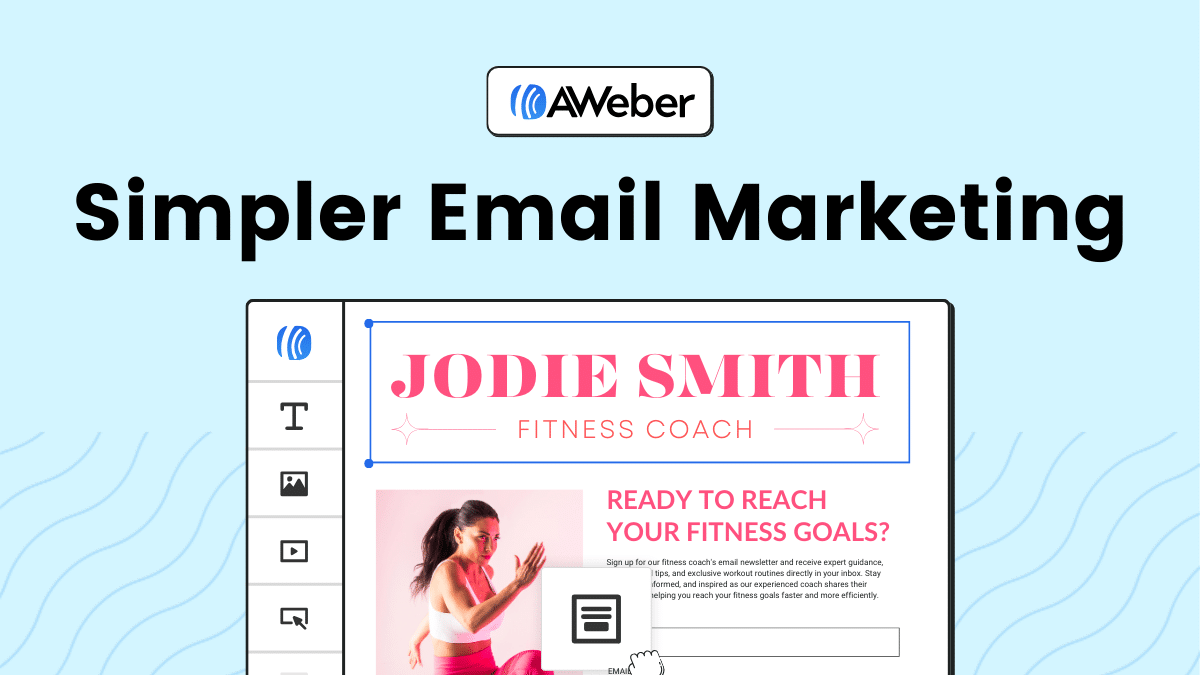 Aweber
| 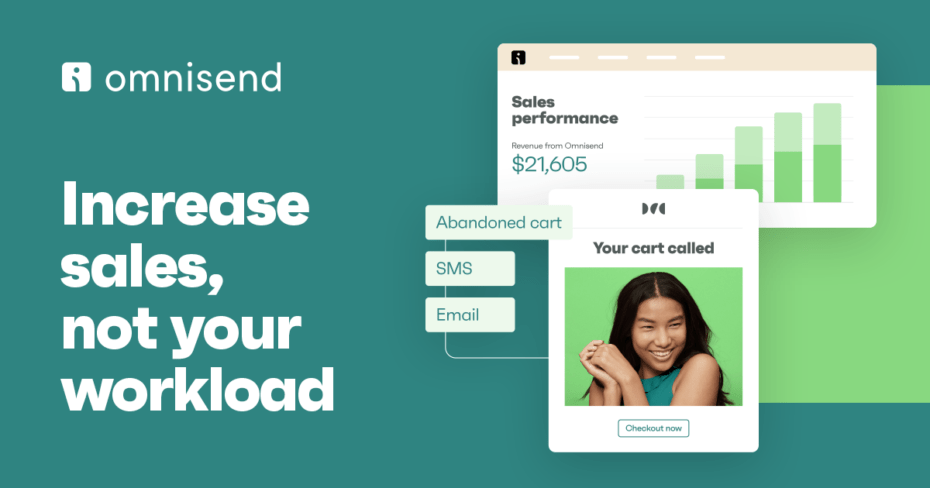 Omnisend
| 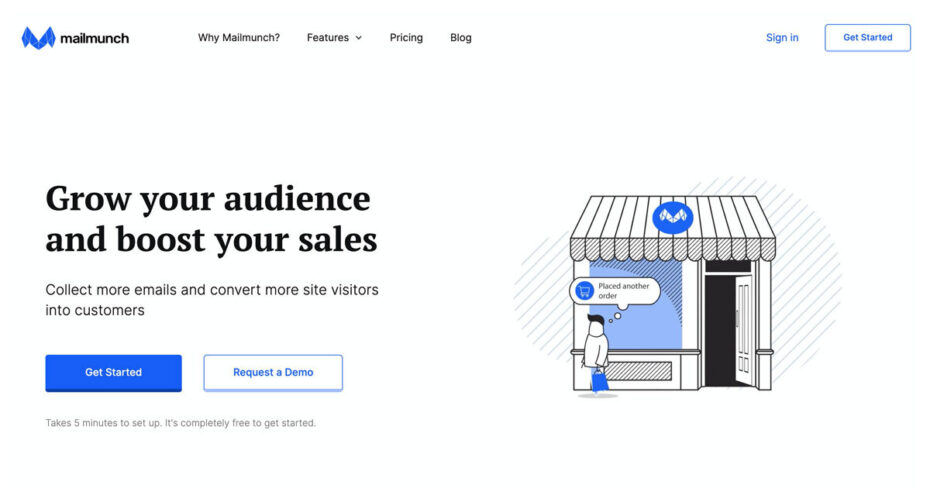 Mailmunch
|
Growing Your Email List Organically
Growing your email list organically involves attracting subscribers who are genuinely interested in your content. Most importantly, I suggest offering valuable incentives, such as exclusive content, discounts, or free resources, to encourage sign-ups. According to marketing experts, offering something of value is one of the most effective ways to grow your email list.
I recommend placing sign-up forms strategically across your website, including on your homepage, blog posts, and landing pages. These forms should be simple and user-friendly, asking for minimal information to reduce friction. My advice is to also leverage social media platforms to promote your email sign-up, reaching a broader audience.
Additionally, my suggestion is to use content marketing to attract and convert visitors into subscribers. By providing high-quality, relevant content, you can build trust and encourage readers to join your email list. I believe that consistency and value are key to maintaining and growing your subscriber base over time.
Creating Compelling Email Campaigns
Creating compelling email campaigns is essential for keeping your audience engaged and driving desired actions. My recommendation is to focus on crafting personalized and relevant content for your subscribers. According to studies, personalized emails have higher open and click-through rates compared to generic ones.
I suggest starting with a clear goal for each email campaign, whether it’s to inform, engage, or convert. This clarity will guide your content creation process and ensure your emails are focused and effective. Most importantly, I believe that your email content should provide genuine value to your subscribers, encouraging them to stay engaged with your brand.
My advice is to use engaging subject lines and preview text to capture your audience’s attention. Additionally, I recommend incorporating multimedia elements, such as images and videos, to make your emails more visually appealing and engaging. According to email marketing best practices, a well-designed email can significantly boost engagement rates.
Lastly, segmenting your email list based on subscriber behavior and preferences can help you deliver more targeted and relevant content. I suggest using email marketing tools that offer segmentation features to refine your campaigns and improve their effectiveness. My intention is to help you create email campaigns that resonate with your audience and drive meaningful results.
Analyzing Email Marketing Metrics
Analyzing email marketing metrics is crucial for understanding the effectiveness of your campaigns and making data-driven decisions. I recommend focusing on key metrics such as open rates, click-through rates, and conversion rates. These metrics provide insights into how well your emails are performing and where improvements can be made.
According to industry experts, open rates indicate how compelling your subject lines are, while click-through rates measure the effectiveness of your email content and call-to-actions. I believe that regularly monitoring these metrics can help you identify trends and optimize your campaigns for better performance.
My advice is to also track metrics such as bounce rates and unsubscribe rates to understand any potential issues with your email list or content. A high bounce rate could indicate problems with email deliverability, while a high unsubscribe rate might suggest that your content is not resonating with your audience. My suggestion is to use these insights to refine your email marketing strategy and improve subscriber retention.
Most importantly, I recommend conducting A/B testing to experiment with different elements of your emails, such as subject lines, content, and design. This approach allows you to identify what works best for your audience and continuously optimize your campaigns. According to email marketing best practices, A/B testing is a valuable tool for improving email performance.
SEO Techniques to Boost Your Online Presence
When figuring out how to do online marketing effectively, implementing robust SEO techniques is crucial. SEO, or Search Engine Optimization, helps improve your website’s visibility in search engine results, driving organic traffic and enhancing your online presence. I believe that mastering SEO can significantly impact your marketing success.
My recommendation is to focus on key areas such as keyword research, on-page and off-page SEO strategies, and building backlinks. By optimizing these aspects, you can enhance your website’s performance and attract more visitors. Let’s explore each of these components in detail.
SEO Services Recommendations
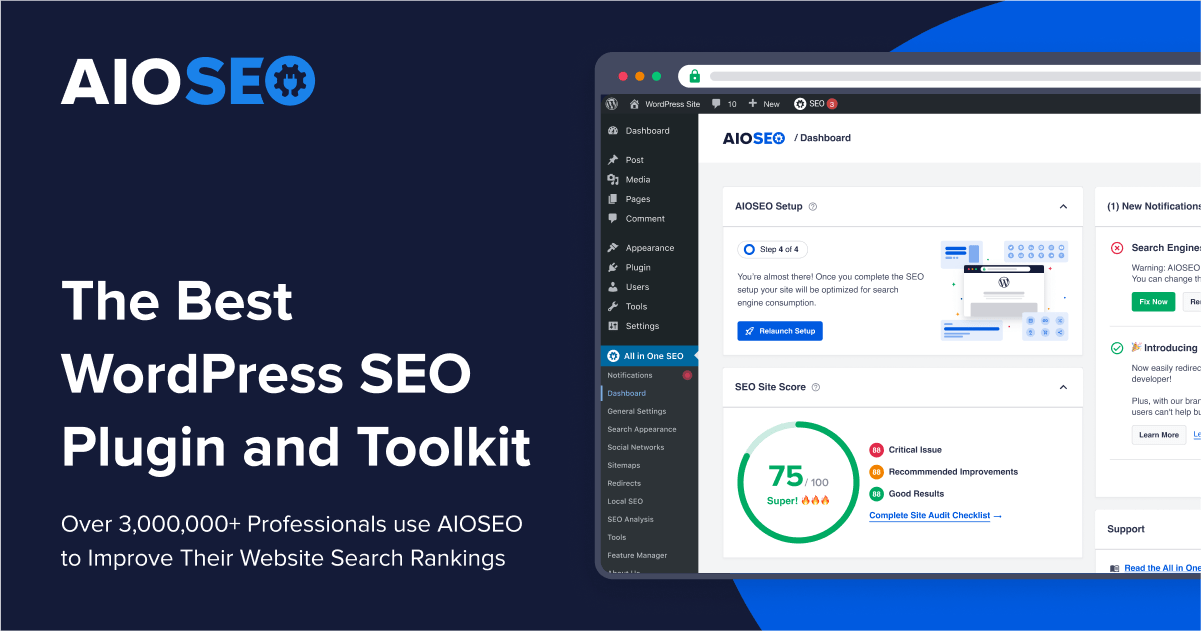 AIOSEO
| 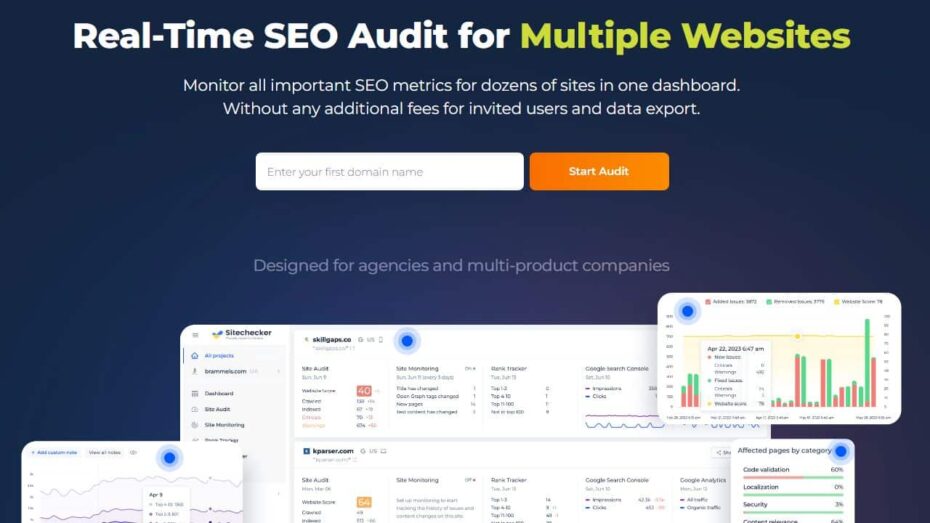 Sitechecker
| 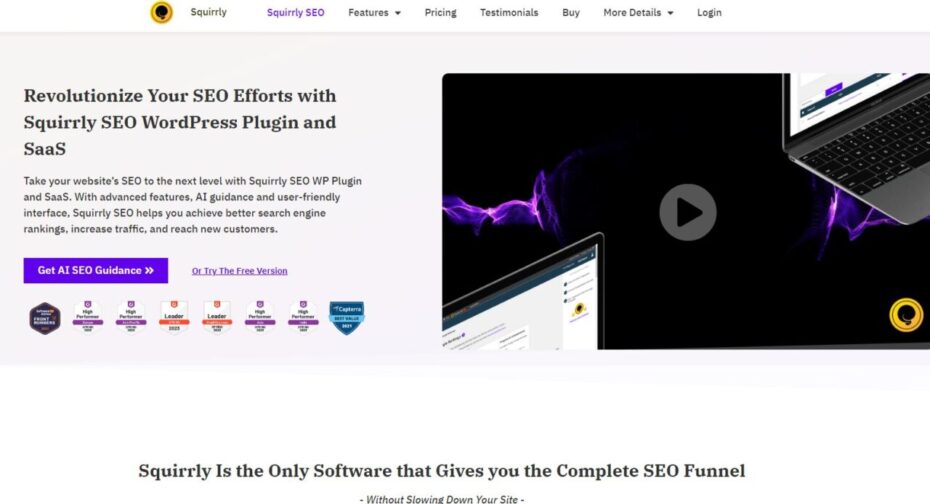 Squirrly
|
Keyword Research and Implementation
Keyword research is the foundation of any successful SEO strategy. It involves identifying the terms and phrases that your target audience uses when searching for products or services related to your business. I suggest using tools like Google Keyword Planner or Ahrefs to find relevant keywords with high search volume and low competition.
Once you’ve identified your keywords, my recommendation is to integrate them naturally into your content, including titles, headings, and body text. Most importantly, avoid keyword stuffing, as it can harm your site’s readability and search engine ranking. I believe that a well-balanced approach to keyword implementation can improve your content’s relevance and visibility.
According to SEO experts, long-tail keywords—specific phrases with lower search volume—can be particularly effective in attracting targeted traffic. I suggest incorporating a mix of short-tail and long-tail keywords to reach a broader audience. My advice is to regularly review and update your keyword strategy based on performance metrics and search trends.
On-Page and Off-Page SEO Strategies
On-page SEO refers to optimizing individual web pages to rank higher in search engine results. This includes optimizing meta tags, using header tags, improving site speed, and ensuring mobile-friendliness. I recommend starting with a thorough audit of your website to identify and fix any on-page SEO issues.
My suggestion is to create high-quality, valuable content that addresses your audience’s needs and includes your target keywords. According to SEO best practices, well-structured content with clear headings and subheadings can improve user experience and search engine ranking. I believe that regularly updating your content to keep it fresh and relevant is also crucial.
Off-page SEO, on the other hand, involves activities outside your website that impact your search engine rankings. This includes building high-quality backlinks, social media marketing, and influencer outreach. My recommendation is to focus on earning backlinks from reputable websites, as they signal to search engines that your content is authoritative and trustworthy.
Most importantly, I suggest monitoring your backlink profile to ensure that you maintain a healthy and diverse range of links. According to industry studies, a strong off-page SEO strategy can significantly enhance your site’s credibility and ranking potential.
Using Backlinks to Increase Authority
Backlinks, or inbound links from other websites to yours, are a critical factor in SEO. They help search engines determine the authority and relevance of your content. I believe that building a strong backlink profile is essential for improving your search engine ranking and driving organic traffic.
My recommendation is to focus on earning backlinks from high-authority websites in your industry. This can be achieved through guest blogging, partnerships, and creating shareable content. Most importantly, I suggest prioritizing quality over quantity when it comes to backlinks, as links from reputable sites carry more weight.
According to SEO experts, broken link building is an effective strategy for acquiring high-quality backlinks. This involves finding broken links on other websites and suggesting your content as a replacement. I suggest using tools like Ahrefs or SEMrush to identify broken link opportunities and reach out to site owners with your replacement content.
I recommend regularly monitoring your backlink profile to track the quality and relevance of your links. Tools like Google Search Console and Moz can help you analyze your backlinks and identify any potentially harmful links that need to be disavowed. My advice is to stay proactive in managing your backlink strategy to maintain a strong and authoritative online presence.
Analyzing and Measuring Your Marketing Efforts
Understanding how to do online marketing effectively involves continuously analyzing and measuring your efforts. By doing so, you can identify what’s working and what needs improvement. I recommend regularly assessing your marketing campaigns to ensure they align with your business goals and deliver the desired results. Most importantly, using data-driven insights to guide your decisions can significantly enhance your marketing outcomes.
In this section, we’ll explore how to set up Google Analytics, track key performance indicators (KPIs), and adjust your strategies based on data analysis. These steps will help you make informed decisions and optimize your online marketing efforts for better performance.
Setting Up Google Analytics
Setting up Google Analytics is the first step in analyzing your online marketing efforts. This powerful tool provides comprehensive insights into your website traffic and user behavior. According to my experience, integrating Google Analytics with your website is straightforward and highly beneficial. My suggestion is to follow Google’s step-by-step guide to create an account, obtain your tracking ID, and embed it into your website’s code.
Once set up, I recommend exploring the various features Google Analytics offers. You can track metrics such as page views, session duration, and bounce rates, which are crucial for understanding how users interact with your site. Most importantly, I suggest customizing your dashboard to monitor the metrics that matter most to your business goals.
Tracking Key Performance Indicators (KPIs)
Tracking Key Performance Indicators (KPIs) is essential for measuring the success of your online marketing efforts. KPIs provide quantifiable data that reflect your campaign’s effectiveness and overall performance. I believe that selecting the right KPIs is critical; they should align with your business objectives and marketing goals. My recommendation is to include metrics such as conversion rates, click-through rates (CTR), and return on investment (ROI).
Most importantly, consistently monitoring these KPIs allows you to gauge the performance of your marketing strategies. According to marketing experts, tracking KPIs helps identify trends, measure progress, and pinpoint areas that need improvement. I suggest using dashboards and reports to visualize your data, making it easier to interpret and act upon.
Regularly reviewing your KPIs can also help you stay agile in your marketing approach. My advice is to set benchmarks and compare your performance against industry standards or past results. This will give you a clear understanding of how well your campaigns are doing and where adjustments may be necessary.
Adjusting Strategies Based on Data Analysis
Adjusting your marketing strategies based on data analysis is crucial for continuous improvement and success. Data-driven decisions ensure that your efforts are effective and aligned with your goals. I recommend regularly analyzing the data collected from tools like Google Analytics and your KPI tracking systems.
According to my experience, identifying patterns and trends in your data can reveal valuable insights. For example, if you notice a high bounce rate on certain pages, my suggestion is to investigate the cause and make necessary adjustments to improve user engagement. Similarly, if a particular campaign shows high conversion rates, I recommend allocating more resources to scale its success.
Most importantly, being flexible and open to change is key. Marketing trends and consumer behavior can shift rapidly, so it’s essential to adapt your strategies accordingly. My advice is to conduct A/B testing to experiment with different approaches and determine what works best for your audience.
In conclusion, leveraging data analysis to adjust your strategies ensures that your online marketing efforts remain effective and relevant. My recommendation is to stay proactive in monitoring your performance, continuously seek improvement, and be willing to adapt to new insights. By doing so, you can enhance your marketing outcomes and achieve sustained success in your online marketing endeavors.
Conclusion
Understanding how to do online marketing effectively is essential for any business looking to succeed in today’s digital landscape. By leveraging free tools, crafting a strategic plan, utilizing various marketing channels, and continuously analyzing your efforts, you can significantly enhance your online presence.
My recommendation is to stay informed about the latest trends and be adaptable to change, ensuring that your marketing strategies remain effective and aligned with your business goals. By following these guidelines, you can drive engagement, increase traffic, and ultimately achieve sustained growth and success in your online marketing endeavors.


